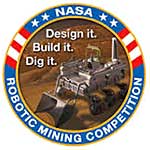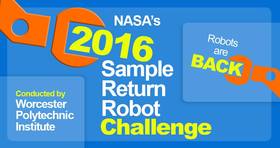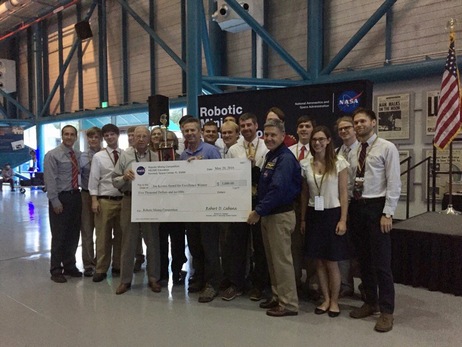Open Innovation gives Mars Research a Stellar Boost
Published Aug-09-16Breakthrough:
Novel robotic concepts win NASA’s Martian soil robotic mining competition.
Company:
NASA, United States
The Story:
 Mars is definitely a hot topic on the space agenda. Currently, NASA is planning to launch a rover mission in 2020 and its first manned mission to the red planet is slated for the 2030s. The trips will be enabled by a vast amount of research and technical innovations involving many people all over the world. Open innovation has its role to play with the crowd being engaged through partnerships, competitions and a number of other initiatives.
Mars is definitely a hot topic on the space agenda. Currently, NASA is planning to launch a rover mission in 2020 and its first manned mission to the red planet is slated for the 2030s. The trips will be enabled by a vast amount of research and technical innovations involving many people all over the world. Open innovation has its role to play with the crowd being engaged through partnerships, competitions and a number of other initiatives.Excavating Martian Soil
One of those is the NASA Robotic Mining Competition (RMC). This annual open innovation competition invites college students across the USA to design and build a mining robot that can travel over a simulated Martian surface, excavate 'Martian dirt' and deposit as much of it as possible into a container within ten minutes. The 'Martian dirt' in this instance is a simulated regolith which has similar properties to the soil found on the moon and on Mars, a close approximation of what NASA's probes encounter during their missions.
The seventh iteration of the contest took place in May 2016 with approximately 50 teams taking part. Some teams consisted of more than a dozen members while others were made up of just a handful of people. Judges assessed robots on a number of different criteria, not just the ability to pick up as much dirt as possible within the given time frame. They were also evaluated on their ability to operate on their own and their size and weight.
Contest Winners
The overall winner was a team from the University of Alabama, comprising students from across engineering, computer science and other disciplines. This was the third time the team had won in the contest's seven-year history.
Their winning robot was based on the design of the machine it had entered the previous year, but with a number of improvements. They included better mining capabilities and an upgrade to its ability to move on its own.
The winner of the Innovation Award was the Utah Robotic Mining Project from the University of Utah. Their concept is an intelligent, autonomous robot that is able to navigate complex environments and excavate regolith without any user input. It is called “Master Chief” after the main character in the video game “Halo, weighs approximately 150 pounds and is nearly two feet in length.
Benefits for NASA and Participants
NASA is a big believer in the benefits that open innovation can bring. With regards to this particular competition, its co-founder and senior technologist in the NASA Kennedy Space Center Swamp Works, Rob Mueller, said: "While it takes about one year to fully develop a mining robot in a research lab, RMC showcases 50 Martian mining prototypes in just one week."
In this way, the space agency directly benefits by encouraging the development of novel robotic excavation concepts that could be adopted in part or in whole by future Mars missions. Participants profit not only from the intrinsic value of participation, but also from the honor of winning and the valuable exposure to world-class experts and the way the space industry works.
Next Story »



